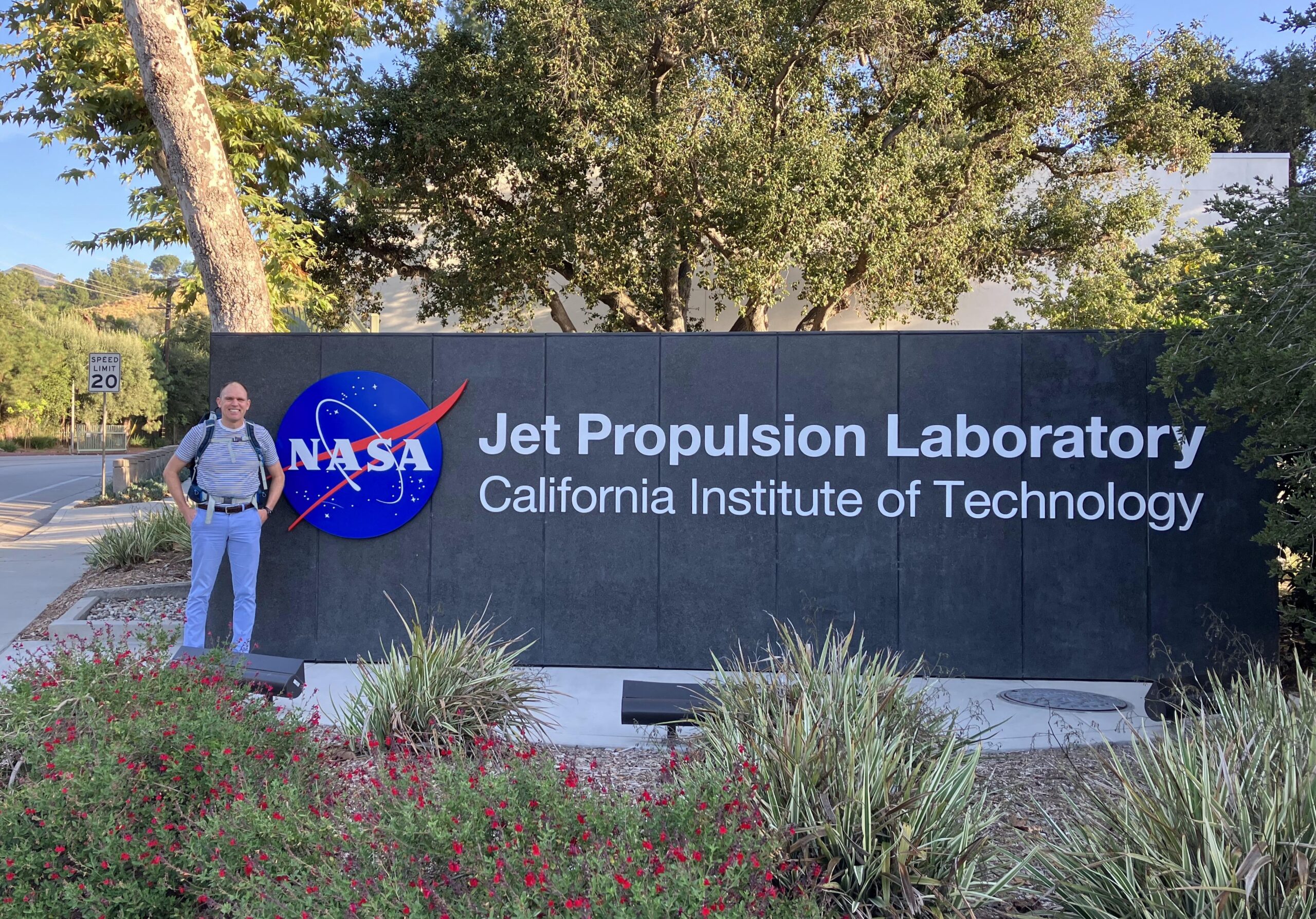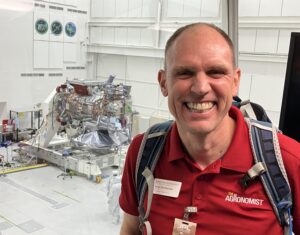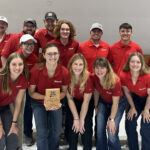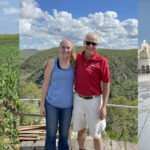

On October 10-12, Dr. Brian Hornbuckle attended a workshop at the NASA Jet Propulsion Laboratory (JPL) in California. He was invited to talk about how new satellite measurements at a higher spatial resolution could be used to better understand ecosystems. Speaking on agro-ecosystems, the title of his presentation was “Besides Soil Moisture, What can be ‘Seen’ with Satellite L-band Radiometry in the U.S. Corn Belt?”
The goal of the workshop was to start the process for contributing to NASA’s 2027 Decadal Survey, which will be used to prioritize new Earth-remote-sensing satellite missions. Scientists in the community are providing input on science priorities that will be merged into a list of most important questions and needs. Workshop participants are putting together a list of new science that could be accomplished with measurements at 10-km resolution using microwave satellites rather than the current 40-km resolution. Information provided by Brian Hornbuckle.
Photo at top: Dr. Hornbuckle at NASA’s Jet Propulsion Laboratory.





